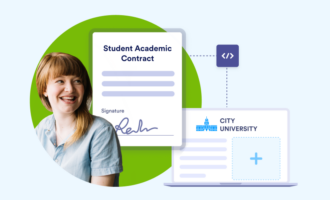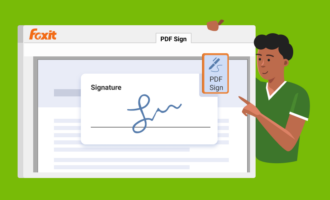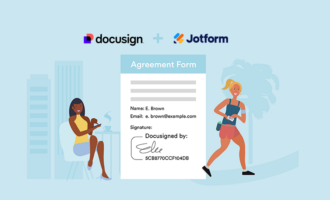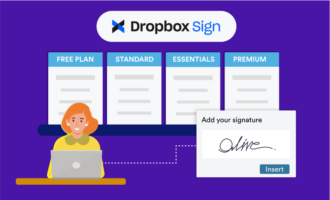Best practices to write a petition letter
- Research your topic
- Create a targeted message for your audience
- Include a statement of purpose
- Create a clear call to action
- Use clear, concise language
- Use active voice
- Include relevant statistics and facts
- Edit your letter
- Direct your demands to the right people
- Gather signatures
How to write an effective petition letter
Writing a petition letter can be a great way to raise awareness and gather support for a cause you’re passionate about. Maybe you’re working to achieve a policy change, inform people about an important social issue, or address a pressing local problem. Maybe you want to encourage action from government officials, business leaders, or large companies.
Whatever the cause and whoever the audience, petition letters can outline your arguments and proposed course of action, show broad support for your position, and reach influential figures.
In this article, we’ll share writing tips and best practices for developing a successful petition letter and highlight how you can use Jotform’s tools and resources to easily create and share petitions.
Writing tips and best practices for petition letters
1. Research your topic
First, research your topic or cause and gather relevant information to make a strong case. Depending on your goals, research may include speaking to community members, lawmakers, or other public figures; reading about relevant rules, regulations, and policies; and reviewing reliable news sources. During your research you can also consider which organizations or leaders to direct your petition letter to.
2. Know your audience and create a targeted message specifically for them
A well-known bit of marketing wisdom is that trying to appeal to everyone risks appealing to no one. That’s why understanding your audience is critical to creating a persuasive, targeted message. Your audience, whether a government agency, an official, a private organization, or some other kind of group, will determine your messaging — both the specific arguments you use and your tone and style.
3. Include a statement of purpose
A statement of purpose highlights your mission — the challenge or issue you’re seeking to address, why it matters to you and why it should matter to your audience, and your recommended solution. This section should be clear, concise, and easy to read. Include only the relevant facts, with no superfluous details.
4. Create a clear call to action
Be sure to include a clear and compelling call to action that removes any doubt about what you want your audience to do after reading the petition. Clearly outlining your goals and the action you’re seeking will help potential supporters as well as the petition’s ultimate audience understand exactly what you’re calling for.
5. Use clear, concise language
Every part of your petition letter should convey a concise, unambiguous message that the target audience can easily understand. Avoid jargon, technical language, and legalese, and clearly state the problem, your proposed solution, and the importance of taking action.
6. Use active voice
Use active voice to create a more powerful, urgent message. Passive voice can create ambiguity, while active voice clearly conveys the subject of an action. When you’re writing a letter aimed at encouraging someone to do a specific thing, using language that specifically states that you’d like them to perform the action themselves can remove any uncertainty about your goals.
7. Include relevant statistics and facts
Support your arguments with statistics and factual information from your research. Using facts and data to support your argument can make it more compelling, spread knowledge about the issue, and help win over potential supporters as well as the target of your petition. You can also include sources for the data, which can convey that research and care went into your arguments.
8. Edit your letter and check for errors
Once a draft of your petition letter is complete, it’s time to edit it. Share your petition with a colleague or friend who can help catch errors, improve narrative flow, and delete wordiness or superfluous information. Once you’ve made any heavier edits, read through your letter at least one more time before finalizing it to look for any smaller errors in punctuation, grammar, spelling, or layout.
9. Direct your demands to the right people
While you already know who your target audience is, contacting them effectively can require some additional research. If you’re petitioning an organization or agency, look for the specific individuals or departments within the organization that should receive the petition and their contact information. Identifying a key decision-maker or stakeholder and addressing the petition letter to them, rather than addressing the organization as a whole, can also be effective.
10. Gather signatures
Generally, the more signatures you get, the stronger the likelihood of your petition making an impact. More signatures indicate more support and can convey the necessity of action.
Share your petition within your own social networks, with email, and on social media. Use QR codes on flyers or posters that link to your petition. Reach out to influential people who may support your goals and be willing to help share your petition.
Online tools like Jotform can help you collect e-signatures for your petition.
Use Jotform’s tools and resources to create a petition letter
Online petitions can be shared widely and quickly. Using a platform like Jotform to share your petition and collect e-signatures ensures that it can be signed from anywhere with internet access, creating a broad base of potential support.
Jotform’s petition templates can help you quickly get started creating an online petition. You can easily use Jotform’s Form Builder to customize a template or start a new petition from scratch. Add an e-signature field to your petition to gather signatures with Jotform Sign, and include contact fields for respondents to fill out if you’d like to follow up with supporters about the petition’s progress later.
Jotform lets you share your petition with a link, email it to potential supporters, embed it on your website, share it on social media, or link to it with a QR code. You can also view signed petitions in a database format with Jotform Tables and automatically generate PDFs of signed petitions.
Take advantage of Jotform’s powerful tools to gather support for your cause with a petition letter today.
Photo by Proxyclick Visitor Management System



















































Send Comment: